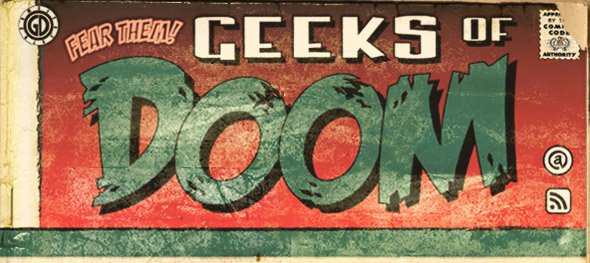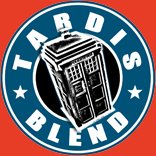
The French Connection, which remains one of the benchmarks in the history of cinema, particularly instrumental in ushering in a new wave of motion pictures during the latter quarter of the 20th Century in which real, gritty, uncensored, and violent police crime drama narratives were portrayed realistically, uncensored, and cinematically expertly, celebrates its 45th anniversary today.
Originally released on October 9th, 1971 in the United States, The French Connection is based on a true story about a French shipping magnate who plans to smuggle over $30 million in heroin to America to make a deal with some New York underworld gangsters, only to have it thwarted by a ragged yet alpha duo of unconventional and extremely unorthodox cops.
The film, which won five Oscars including Best Picture, is a crackerjack overflowing cauldron of intensity and documentary style visuals throughout. Gene Hackman leads a tight but loose cast as Popeye Doyle, one of the most complex characters ever presented on screen, certainly in the policeman genre. With his porkpie hat and slightly inebriated always on edge demeanor, Hackman’s Oscar-winning portrayal presents Doyle as relentless, impatient, explosive, cunning, ruthless, racist, sexist, kinky, unabashed, and violent, sometimes all at once. We know nothing of his back story, except that he was mainly responsible for the accidental shooting death of another policeman in the past. Other than that, he remains an enigma, but is firmly vivid in the present. Doyle, along with his partner Cloudy (a serious and in the moment Roy Scheider pre-Jaws) will do whatever it takes to snare their quarry; that means roughing up suspects, not reading anyone their rights, doing it above the law, but still remaining, a good cop.

Like Clint Eastwood’s Dirty Harry (the film Dirty Harry came out in theaters a few weeks after The French Connection), Doyle has laser beam focus with his eyes on the prize. His obsessive nature is what ultimately makes him a successful cop catching his prey, never mind how many rules he has to break to get there. For 1971 audiences and what was the general consensus of what film was and what was allowed in film at that time, the narratives, themes, and characters of The French Connection blew manhole cover sized holes through that conventional thinking and created a template (that films like Bonnie and Clyde and The Wild Bunch among others were the embryonic blueprint) for a certain kind of genre film that continues to this day to still reverberate its influence in a global sense. With its open-ended sort of half resolution denouement (the open-ended storyline would be explored and ultimately satisfied in the less polished but still gripping 1975 sequel), The French Connection pioneered the way one made films and the way one watched them.
The moody styles of the film itself go far beyond just its visuals and performances like the visual setting of characters in the biting cold of a gripping New York City 1970 winter, replete with much of the action and dialogue (from an Oscar-winning script by Ernest Tidyman, also known for penning the John Shaft book and film series, who was an altogether different kind of early 70s New York City cop) taking place outside on location. Another wonderful aspect of the movie, which lays great part in the taut yet breathable direction by William Friedkin, who won an Academy Award for the film, is how New York City acts as a character in every way and Friedkin, along with the also moody cinematography by Owen Roizman, makes sure to take full advantage of that fact.

We see Doyle and the other characters in places all across the grid of New York City, from upper Manhattan to trickles of Times Square, deep in Southern Brooklyn, out on a garbage dump station in Ward’s Island, down in the subways of Grand Central Station. The film also looks in a way like a gritty travelogue for the city, circa just the dawn of the 1970s. Thrown in for good measure are scenes done in Marseilles, France, where the story begins with a sledgehammer wallop and which adds an extra sort of visual gravitas to the entire film. Each scene filmed there, replete with subtitles as characters are speaking in native tongues, feels like another, wholly European production. Ultimately, these elements are like a zeitgeist in every way, from the story to the characters to the visual presentment on screen.

And then of course, there is the much-lauded chase scene, which is still considered one of the genre’s and the medium’s greatest ever crafted for the screen. The centerpiece of the film and one in which the audience gets completely emotionally absorbed and riveted and purposefully suffocated, the chase scene, in which Popeye, after almost being gunned down by a sniper at the entrance of his home in his apartment complex where he lives, carjacks a civilians car, and chases the sniper, who has hijacked an elevated subway train which runs over a busy Brooklyn street. Doyle races down it at almost 100 miles an hour, train barreling above him from an elevated track and just ahead of him, desperate and determined to catch his foe, completely neglecting all the traffic and pedestrians around him. The heart-stopping blend of the Oscar-winning editing by Jerry Greenberg, (who also did the chase scene in Bullitt with Steve McQueen, which came out a few years earlier and is also considered one of filmdom’s best), stunt driving by the legendary late stunt driver Bill Hickman (who also has a role in the film as a Fed who has a rather prickly relationship with Popeye), and Hackman himself, who is like a can of dynamite with fuse lit in the car during the scene, silently (to us) screaming, banging the steering wheel, pissed off that everyone is in his way, never mind that he’s the one causing the sprawling and wildly reckless fracas, creates a sort of rhythm for the scene, a heartbeat, but one that’s going a tempo that’s making it almost burst out of the chest.

The music too acts as a sort of a character in the film. Scored by one of the greatest geniuses in American music, the late Don Ellis, the trumpet player, arranger, and big-bandleader who pioneered in jazz music (taking cues set forth by Dave Brubeck) a sub-genre of taking odd rhythms and meters and employing them in basic jazz idioms, to create a marriage of complex yet swinging sounds. His music here, created during a time in which he had just introduced a string section to his orchestra, is like the film — brassy, moody, dark, like a dirty sunrise over a garbage strewn East River, skyline foggily and dustily still in the background. That last statement was complimentary, evocative of the kind of music and tone and feel The French Connection manifests and permeates throughout, ultimately creating still, 45 years on, a film that stands out from its own genre and transcends it. It remaining one of the great films in Hollywood history, and a perfect guidebook of how police thrillers and the characters within them should be executed.

The tagline for The French Connection on the film poster back in 1971 said “The Time is Right For An Out and Out Thriller Like This” (some, like the poster shown at the head of this article, said “Doyle is Bad News – But A Good Cop”). That’s one of the few things about the film that doesn’t remain in the zeitgeist, as The French Connection is timeless, and is ripe, intense, and memorable entertainment in perpetuity, a rare example of what almost could have be a B cop movie but instead, because of the people involved behind and in front of the camera, is elevated to the highest class in every way, but on its own terms and without hesitation. The legendary late critic Pauline Kael put it best when she reviewed the film back in 1971 for her regular column in The New Yorker, in which she summed up that Popeye Doyle was a “dirty son of a bitch who gets the job done, and so is The French Connection.”
Indeed.











No Comments »
No comments yet.
RSS feed for comments on this post. TrackBack URL
Leave a comment